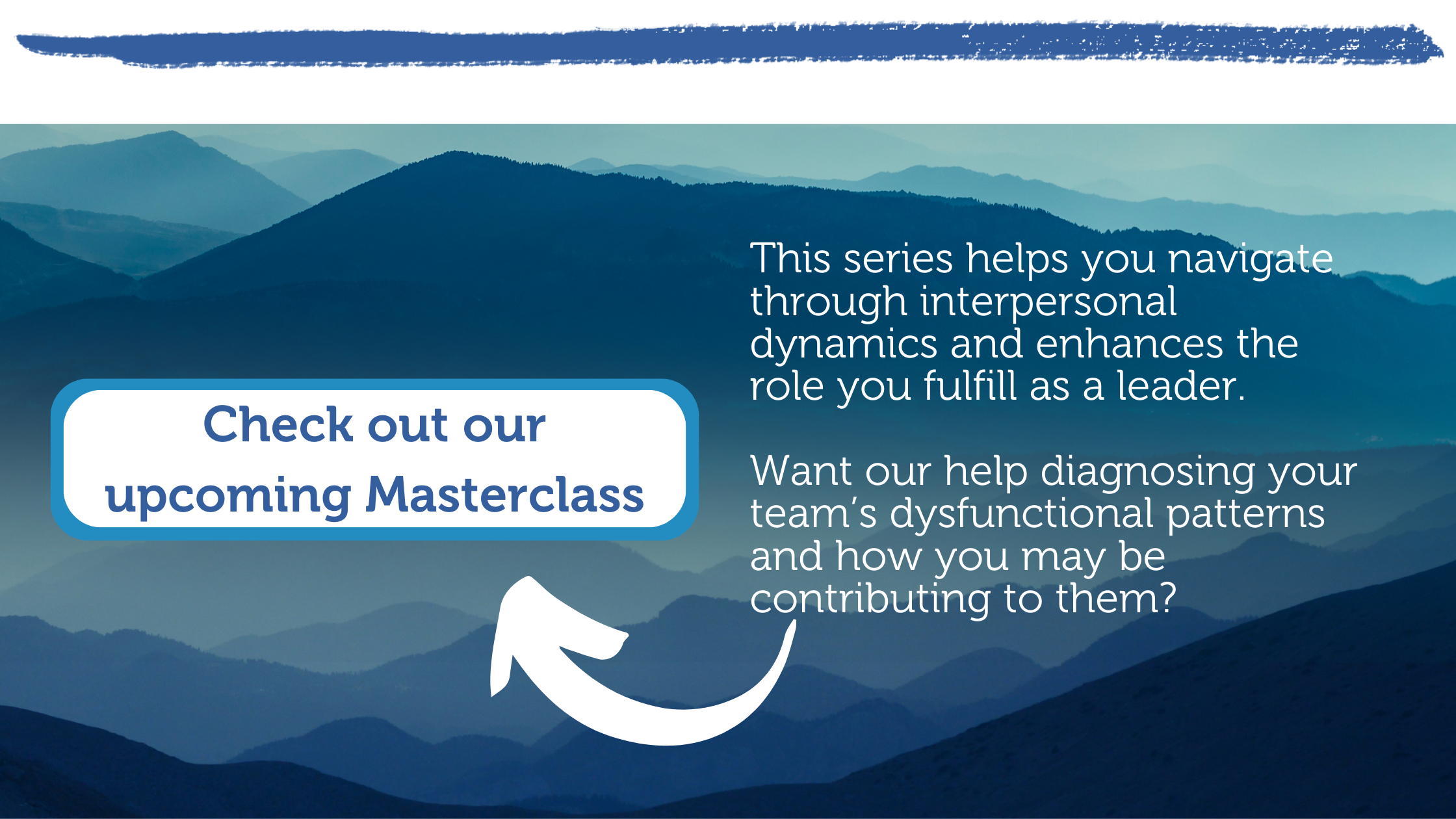Why leaders should invest in developing “communicative competence”
By all external factors, the organization — let’s call it Horizons Tech — was knocking it out of the park. It looked very successful from the outside: they were wildly successful in delivering their product, they were seen as a cool, hip place to work, and they were growing exponentially.
But, if you spoke to someone long enough, the real story of what it was like inside would start to surface. Everything was a crisis, so much so that most people’s work day seeped into their evenings and weekends. Everyone was tired, exhausted even. Many felt like they had to “always be on.”
In no small part, this was because Horizons Tech had an unspoken leadership philosophy: if things were urgent, it meant people would step up and get amazing things accomplished. In other words, urgency was what brought out the highest performance in people.
The goal was to grind it out and keep reaching for higher performance
“What I didn’t know at the time,” said one leader in retrospect, “is that we were actually wearing people out, and I believe that became one of the greatest causes of our inability to continue to scale. The pace we were working at was not sustainable. We were overly focused on our WHAT — getting our product out the door — and we undervalued HOW we were approaching the work process, including our attention to people.”
This overinvestment in getting things done at all costs played out every day in very small ways: competitiveness among divisions, inability to make commitments without having to reschedule, constant small fires to put out…. At every turn, seemingly small subjects became huge mountains to cross, and there were endless meetings in which the same conversations were had over and over again without ever seeming to resolve the topic at hand.

Something had to change
“Dara,” the COO of Horizons Tech, was exhausted. For the past few years, she’d seen the behavioral gap emerging throughout the organization’s leadership: an over-attention to results and an undervaluing of the people. She watched others, including herself, leave meetings feeling really misunderstood and like their ideas and concerns were not being heard.
Intellectually, she knew this to be a leadership and relationship challenge, but she thought she could be the hero and fix it. She thought she could single-handedly course correct the underlying leadership philosophy by modeling a more people-first approach and inspire greater organizational investment in leadership development. At a certain point, though, she realized the truth: her individual efforts were not bearing fruit.
She kept waiting for the Learning and People department to sponsor a leadership program, but it seemed they were overly focused on new hires and completing the standard “check the box” training that every large business finds themselves filling. And it had been years since she had seen any of the senior leaders do any kind of collective growth or development work.
What she heard over and over was that there was only so much time in the day.
But Dara continued to believe that leadership development at a senior level was critical to getting the organization back on track. She felt certain that leveling up the organization’s leadership would enable it to meet the exponential growth goals it was striving for.
So Dara began to form a new idea: she wanted a peer group of senior leaders from across the organization to join her in building relationships with one another, forming trust, and aligning on a shared vision.
And to make sure this peer group got off the ground, Dara decided to sponsor it herself, beginning with a leadership development program that would help senior leaders learn to navigate complex cross-organizational needs and politics more effectively by focusing on behavioral change. She had experienced this kind of program at a different organization, and she was certain it would help in this setting.
As Dara envisioned it, the program would be focused on helping leaders grow their range in their leadership by developing their “communicative competence” — a foundational skill for leaders today who are navigating the high stakes of uncertainty and change.
“Communicative competence” encompasses two main skills:
- Our individual ability to see the patterns in our language and behaviors that are serving and not serving us.
- Our individual ability to use different language — or language structures — as needed in order to change the nature of what’s happening in a conversation.
In short, communicative competence is the ability to make ineffective conversations more effective. It ensures that conversations that need to happen do happen, and that they unfold in a way where participants can really hear and engage productively with each other.

To be sure her vision for a leadership development program came into being, Dara realized she would have to be the one to get it funded. It would require her to deprioritize other things over the coming year, but it was not a hard decision. She met with her boss and shared her vision with him, and while he was skeptical about the investment and — more importantly — the time, she had been with the organization long enough that he had a high amount of trust in her ability to deliver results.
Finally, she saw a real pathway for change, and she knew just the group of people to invite into the journey with her…
The Leader’s Edge: A multi-part series to showcase the challenges and outcomes of investing in leadership development
I just recently met with a leader from Horizons Tech who I haven’t seen in three years — not since the end of the leadership development program brought together by Dara. He was reflecting on our past work together and noted that it had been really hard and often confronting. He had found himself tired. But, in the end, he had found it to be worth it.
The interaction got me thinking, as his words resonated with the kinds of reflections I often hear from individuals and teams who have gone through TeamCatapult’s leadership development programs.
- It was hard.
- It was confronting.
- It was worth it.

In a world of constant change disruption, it can be hard to diagnose the issues that are holding us back. But among the leaders I speak with every day, there are some regular refrains I hear that capture the daily frustrations that prevent otherwise incredible organizations from meeting their full potential:
- We keep having the same conversations over and over.
- We keep repeating the same actions and expecting different results.
- We make everything harder than it needs to be through redundancy and miscommunication.
- We’re stuck in old patterns of thinking, which leads to frustration and overwork.
- We are not aligned on a common vision.
- Our decision making takes too long and it’s unclear who’s making the decision.
- Everyone has slightly different ideas about how to move forward and no time to sort out what’s different about each option.
- There are too many misunderstandings and debates.
- We don’t have time for one more meeting!
- Seemingly small issues escalate quickly to major misunderstandings that require others to get involved and mediate.
At the heart of all these commonalities are two core components: unhelpful behavioral patterns that are hard to break in complex systems, and the inability to communicate effectively in high-stakes situations where everyone has different perspectives and a lot of skin in the game. A big piece of what makes our programming “worth it,” participants tell me, is that it gets right at the heart of these two issues.

But one thing we hear a lot at TeamCatapult is that not having a clear sense of process and outcomes in a leadership development program can feel difficult. We hear things like “what actually happens in the program?” or, “what will the outcome be?”
These can be sticky barriers to overcome. The truth is that leadership development outcomes will be as unique as the individuals and cohorts who participate — and those outcomes only tend to become clear by participating.
That’s why I’ve developed The Leader’s Edge, a multi-part series depicting one leadership cohort’s experience in a leadership development program. Designed to help leaders get a sense of the work to come, the series illuminates the individual and collective challenges facing a fictionalized organization (Horizons Tech) that was struggling to scale and repeat its meteoric initial success.
Like many organizations, the challenges at Horizons Tech were ultimately cultural — meaning that they stemmed from issues related to interpersonal dynamics, team processes, and a general inability to help teams produce at their full, innovative potential. And, like many organizations, a lot of the cultural issues hovered in the space of opposition and resistance.
The fictionalized story of how this organization’s leaders developed their “communicative competence” is a fable depicting the rewards of investing in leaders’ ability to navigate behavioral patterns and group communication dynamics — and the risks associated with not taking the time and resources to commit to this key component of leadership development.
Why this story matters NOW — for all of us
Since the pandemic, organizations are suffering from a range of now-familiar symptoms:
- Quiet quitting
- Lack of diversity and inclusion
- Challenging “return to office” transitions
- Downturns and layoffs
And yet, in this evolving context, we see organizations not only investing less in leadership development, we see them investing in treating the symptoms of upheaval and change rather than addressing the root cause of why morale is seemingly at an all-time low: organizational culture.

Organizational culture is the framework for success, and it starts with leadership.
Leaders bring the weather. When the organization is experiencing one crisis after the next, leaders need to look inside. What’s the role they are each playing in the outcome they are getting?
A 2022 Harvard Business Review study found that, of the organizations who are most successful at implementing leadership development programs, 35% reported an increase in revenue as a result of their efforts. According to a BetterManager’s study titled “The ROI of Leadership Development,” 42% of respondents observed an increase in revenue and sales as a direct result of leadership development programming; 47% of those who observed an increase in revenue and sales credited better-performing managers and/or their direct reports.
And there’s more data where that came from. The International Coaching Federation (ICF) found that 86% of organizations saw an ROI on their coaching engagements, and 96% of those who had an executive coach said they would go through the process again.
Tangible factors included:
- Increased productivity
- Higher levels of overall employee performance
- Reduced costs
- Growth in revenue and sales
- Higher employee retention
- Higher employee engagement
Intangible factors were increased, as well:
- Confidence-building in those being coached
- Improved communication
- More vital employee/peer-to-peer feedback
- Improved key stakeholder relationships
So, what does this all mean for you?
One of the big things that holds leaders back from committing to personal and collective leadership development is lack of clarity or certainty about what they will get as a result of investment — and if the result will be worth the time trade off. Especially because one of the most precious resources for any leader is that of time.
But rather than asking what you will get or what it will cost, I’ll invite you to ask a different question: What’s the cost of continuing to behave and do things just as you’re doing them right now?
If you are satisfied with your current results, then now’s maybe not the time for you to think about leadership development. But if you’re challenged in some way — it means that you’re on your edge. The way things have been going is taking more time and energy without yielding the results you’re looking for. If this sounds like you or your organization, then now’s your time.
It’s time to take a strategic pause and begin to imagine a way that’s easier, more fulfilling, and more engaging. A version of your own leadership that achieves your desired results with ease and feels authentic to who you want to be as a leader.
But, as The Leader’s Edge multi-part series will showcase over the coming weeks, this is not the work of a single day or a single workshop. There is no silver bullet. There are no simple promises that anyone or any program can make to say that if you “do X” you will “fix Y.”
The work is inner work and interpersonal work. And it’s hard, it’s confronting, it’s worth it — and you too can do it! You just have to make the choice to believe that going a little slower is worth it to go much, much faster.

What’s at risk if nothing were to change in your leadership right now?
Keep reading through the upcoming episodes of The Leader’s Edge to discover how
leaders in the fictionalized organization of Horizons Tech answered this question for themselves — and what they got as a result.




